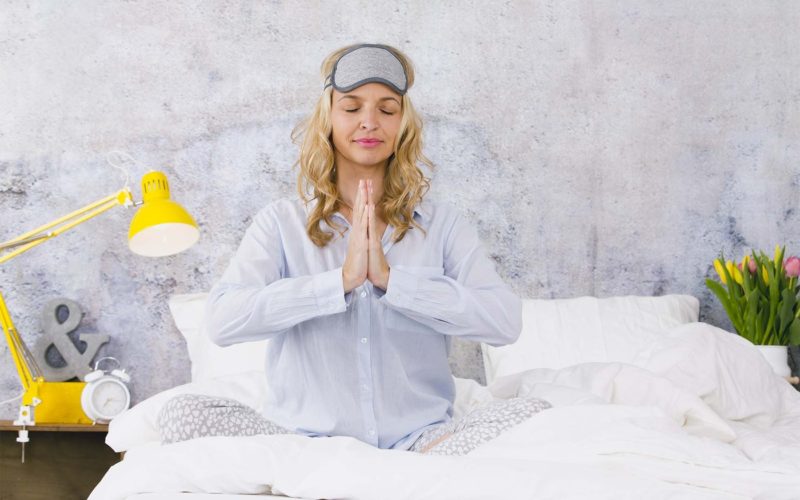Reach for better rest when you add these bedtime yoga poses to your sleep routine.
- BY STEVE CALECHMAN
- JULY 21, 2020
Before the pandemic, 25% of Americans suffered from acute insomnia every year, according to a 2018 study from the University of Pennsylvania. We can only assume that number has gone up. Bills, chores, work, technology, and now a global pandemic all conspire to keep our brains constantly on, when sleep needs the opposite. We try anything in order to settle down and let go of the day, from cups of tea to writing in a journal. Here’s one more approach to consider: mindful movement.
Many studies have linked yoga with better sleep. Harvard Medical School sleep and circadian health expert, professor Sat Bir Singh Khalsa, notes that experimental trials have also shown meditative breathing can be a powerful sleep aid.
Khalsa has researched how meditative breathing can help with sleep, insomnia specifically, and he found that it increased sleep time and decreased wake time. The study had its limitations. It used a particular breathing pattern: inhaling for 4 counts, holding for 16, and exhaling for 2, but Khalsa says that he can make a larger recommendation. Slow, mindful breathing at around 3–6 breaths per minute—normal is 15–20—could be effective for falling asleep. “Anything that slows down the breathing rate will help with decreasing arousal,” he says. And since most mindful movement and yoga poses are done with some form of slow breathing in this range, “putting two and two together, it makes sense,” he says.
And as Khalsa adds, there’s no reason to wait for double-blind studies. The fundamentals for any bedtime routine are consistent. One needs to unwind the mind and the body, so the autonomic nervous system is quieted down and the production of stress hormones, like adrenaline and cortisol, decrease. The slowdown also needs a certain time investment. “While there isn’t a magic combination of poses, doing yoga certainly falls into those parameters.” It’s gentle. It’s relaxing. And, most especially, it’s lying down, and “You can’t fall asleep standing up,” Khalsa says.
Bottom line: There’s little downside to trying and only positives to gain.
1. Bridge

Lie on your back and bend your knees with your feet close together but not touching. With your arms along your sides and palm facing up, press your feet into the floor, reach your tailbone to your knees, and lift your hips into the air, tucking in your pelvis and using a block or cushion for support underneath your lower back if preferred. This position opens up your hips and quads and allows you to observe your belly as you breathe.
2. Supported Fish

Lie on your back with a pillow supporting your shoulder blades. Position your arms out at 45 degrees from your hips with your palms up. You can keep your legs straight or have your knees bent and together with your feet slightly apart. This will help relax your upper-back muscles and stretch your chest.
3. Spinal Twist

Lie on your back with arms out in a T formation and palms up. Start with bend straight legs, then your right knee and bring right foot onto your your left leg wherever it feels comfortable. Gently press your right knee to the left with your left hand, twisting your torso. You may feel a stretch in your shoulder, chest, lower back, hip, or thigh—it will be where you most need it. Return to the centre and do the other side.
4. Legs Up the Wall

Lie on your back with bent knees and move your buttocks as close to the wall as possible. Bring your legs up the wall, lift up your hips, and put a pillow under your lower back to keep your pelvis off the floor. Keep your feet apart a few inches and relaxed. After a day spent standing or sitting, your legs will feel lighter and your body will feel more balanced overall.
